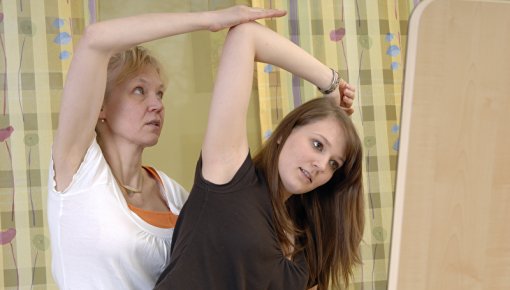Ceballos-Laita L, Carrasco-Uribarren A, Cabanillas-Barea S et al. The effectiveness of Schroth method in Cobb angle, quality of life and trunk rotation angle in adolescent idiopathic scoliosis: a systematic review and meta-analysis. Eur J Phys Rehabil Med 2023; 59(2): 228-236.
Dunn J, Henrikson NB, Morrison CC et al. Screening for Adolescent Idiopathic Scoliosis: A Systematic Evidence Review for the U.S. Preventive Services Task Force (AHRQ Evidence Syntheses; No. 156). 2018.
Gamiz-Bermudez F, Obrero-Gaitan E, Zagalaz-Anula N et al. Corrective exercise-based therapy for adolescent idiopathic scoliosis: Systematic review and meta-analysis. Clin Rehabil 2022; 36(5): 597-608.
Negrini S, Minozzi S, Bettany-Saltikov J et al. Braces for idiopathic scoliosis in adolescents. Cochrane Database Syst Rev 2015; (6): CD006850.
Thompson JY, Williamson EM, Williams MA et al. Effectiveness of scoliosis-specific exercises for adolescent idiopathic scoliosis compared with other non-surgical interventions: a systematic review and meta-analysis. Physiotherapy 2019; 105(2): 2014-2034.
IQWiG health information is written with the aim of helping people understand the advantages and disadvantages of the main treatment options and health care services.
Because IQWiG is a German institute, some of the information provided here is specific to the German health care system. The suitability of any of the described options in an individual case can be determined by talking to a doctor. informedhealth.org can provide support for talks with doctors and other medical professionals, but cannot replace them. We do not offer individual consultations.
Our information is based on the results of good-quality studies. It is written by a team of health care professionals, scientists and editors, and reviewed by external experts. You can find a detailed description of how our health information is produced and updated in our methods.



